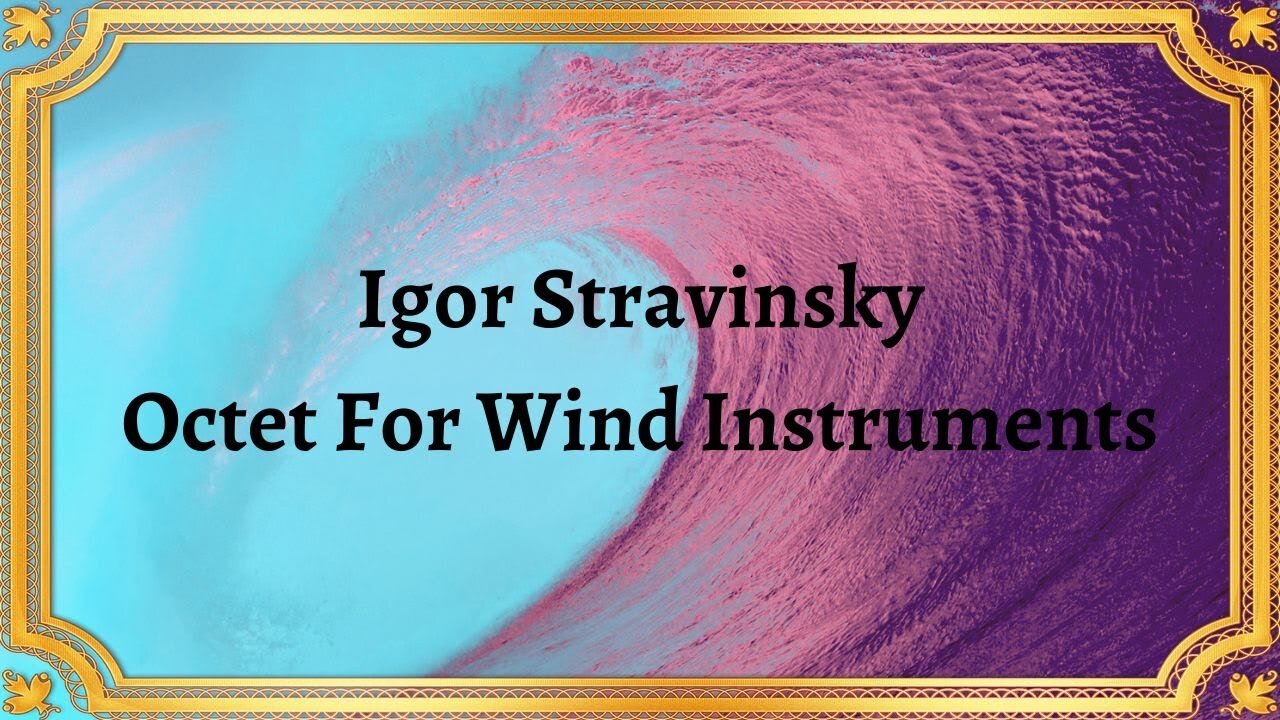Premium Only Content

Igor Stravinsky Octet For Wind Instruments
#classicalmusic #IgorStravinsky #OctetForWindInstruments #neo-classicalera #Baroque #jazz #musicalinstruments #musicalcomposition #musicalgenres #musicappreciation #musicians
Publication date 1950
Leonard Bernstein; Boston Symphony Orchestra
Igor Stravinsky's Octet for Wind Instruments is a ground-breaking musical composition that captures the essence of his musical genius. It is one of his most renowned works of the neo-classical era, presenting a unique blend of traditional and modern musical styles. The piece is a stunning example of Stravinsky's ability to bend traditional forms into something new and innovative.
Composed in 1923, Octet for Wind Instruments was commissioned by the conductor Ernest Ansermet just two years after Stravinsky's successful ballet "The Rite of Spring." At the time of its composition, Stravinsky was exploring the possibilities of neo-classicism, blending the traditions of the past with contemporary compositional techniques and modern instrumentation.
The piece takes inspiration from Baroque compositions and traditional octets, featuring a complex interplay of different wind instruments, including flute, clarinet, oboe, bassoon, horn, trumpet, trombone, and bass trombone. The composition is structured in three distinct movements, each of which takes a unique and creative approach to exploring this unique instrumentation.
The first movement, titled "Sinfonia," begins with a rich, layered dialogue between the wind instruments that combines intricate melodies with rich harmonies. Despite its neo-classical structure, the dynamic and unpredictable nature of the piece connects it to the rhythms and tonalities of modern jazz.
The second movement, "Tema con variazioni," provides a stark contrast to the first, opening with a simple, delicate statement that transforms through a series of modulations and variations. The piece's rich harmonies and unpredictable rhythms are carried through into this movement, which explores the resonant qualities of the wind instruments.
The third and final movement, "Finale," is a rousing and energetic conclusion to the piece. Stravinsky masterfully weaves the different wind instruments together, culminating in a thrilling and joyous finale that showcases the brilliant interplay of the octet.
Octet for Wind Instruments stood out from the works of other composers of the time due to its unusual instrumentation and innovative approach to composition. Stravinsky had taken an established classical form and reimagined it for the modern world, cementing his position as one of the most important composers of the 20th century.
In conclusion, Igor Stravinsky’s Octet for Wind Instruments is a masterpiece that showcases his exceptional talent in blending diverse musical styles to create something truly compelling.
You have the opportunity to support the channel https://destream.net/live/RadSiarAl/donate
-
 LIVE
LIVE
Man in America
9 hours agoAI mRNA Vaccines, Turbo Cancer & Blood Clots... What Could Go Wrong?! w/ Tom Haviland
457 watching -
 LIVE
LIVE
Precision Rifle Network
1 day agoS4E3 Guns & Grub - Trump a new era for gun rights?
101 watching -
 1:05:31
1:05:31
Glenn Greenwald
4 hours agoSection 702 Warrantless Surveillance Ruled Unconstitutional: Press Freedom Advocate Seth Stern Explains; The Rise of Unions & the Impact of Trump's Populism with Author Eric Blanc | SYSTEM UPDATE #395
45.9K63 -

The Amber May Show
3 hours agoWomen Of Rumble | Amber, Kelly and Wendy Wild
3.72K2 -
 1:16:38
1:16:38
Josh Pate's College Football Show
5 hours ago $0.57 earnedCFP Title Viewership | JP Poll Under Attack | Bama & Oregon Season Grades | Most To Prove In 2025?
12.5K -
 LIVE
LIVE
VOPUSARADIO
9 hours agoPOLITI-SHOCK! "THE TIDE IS TURNING"! 3 SPECIAL GUESTS JOINING US TONIGHT!
126 watching -
 52:47
52:47
Kimberly Guilfoyle
7 hours agoDismantling DEI Once and For All, Live with Tyler O’Neil & Eric Deters | Ep.190
76.5K28 -
 1:34:59
1:34:59
Redacted News
6 hours agoBREAKING! TRUMP SIGNS ORDER TO RELEASE JFK FILES, CIA IS FURIOUS | REDACTED NEWS
195K327 -
 1:36:09
1:36:09
Benny Johnson
7 hours ago🚨WATCH: President Trump Declassifies JFK, RFK, MLK Files LIVE Right Now in Oval Office, History Now
149K254 -
 2:02:09
2:02:09
Common Threads
5 hours agoLIVE DEBATE: Will Democrats Roll Over or Fight Back?
19.7K